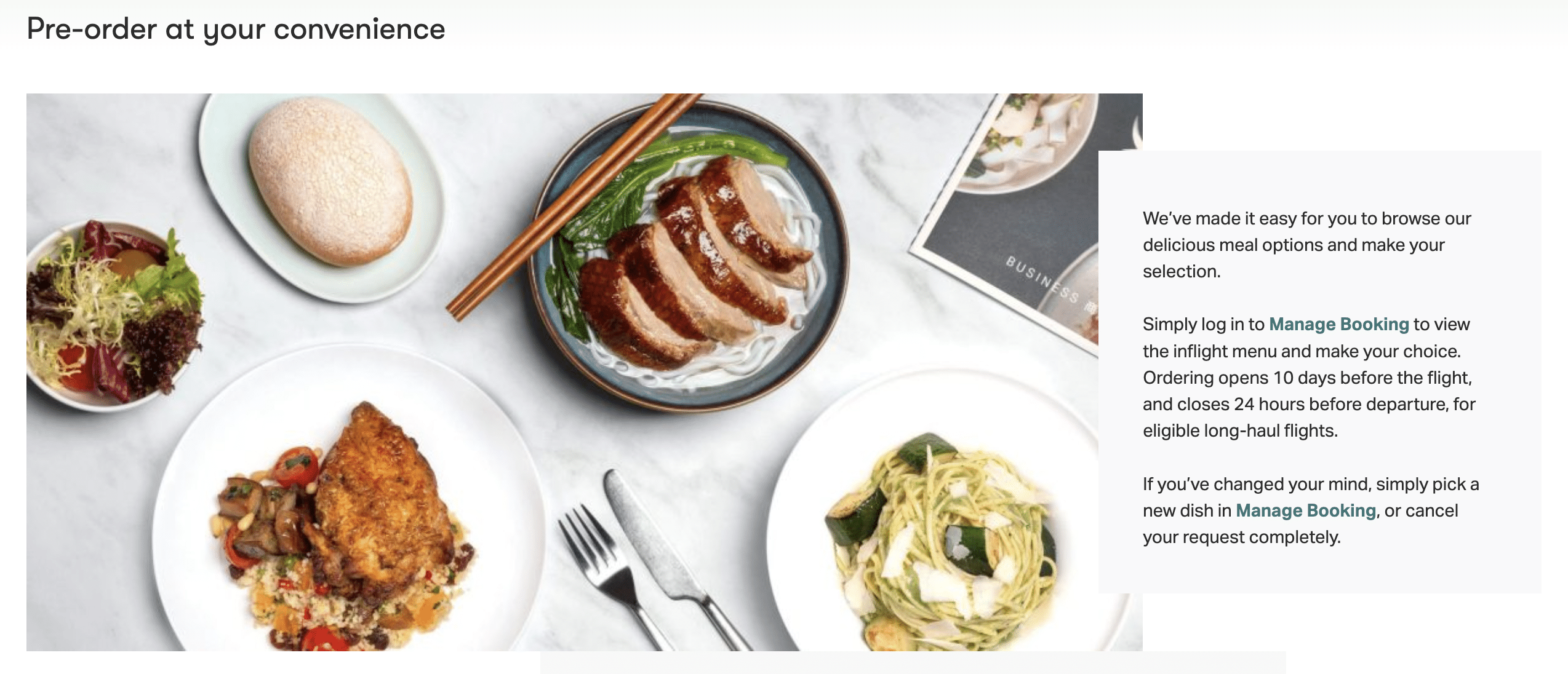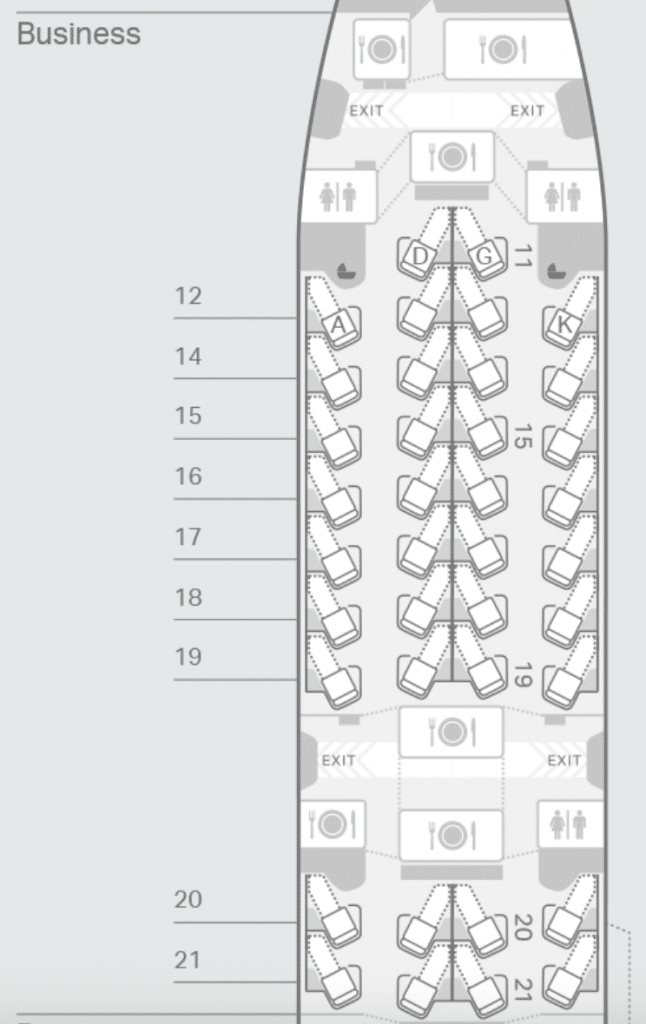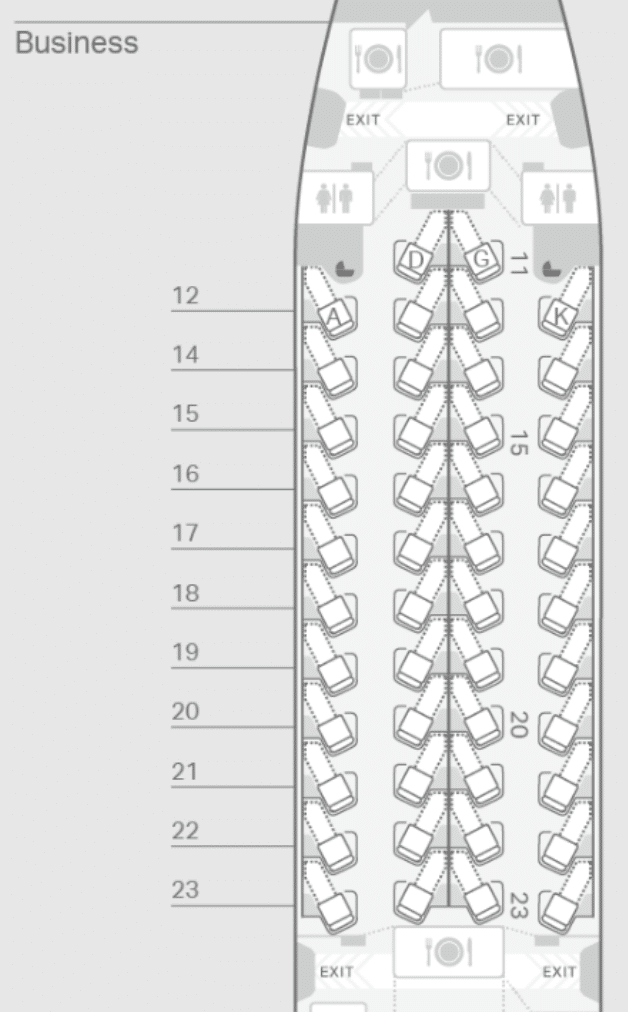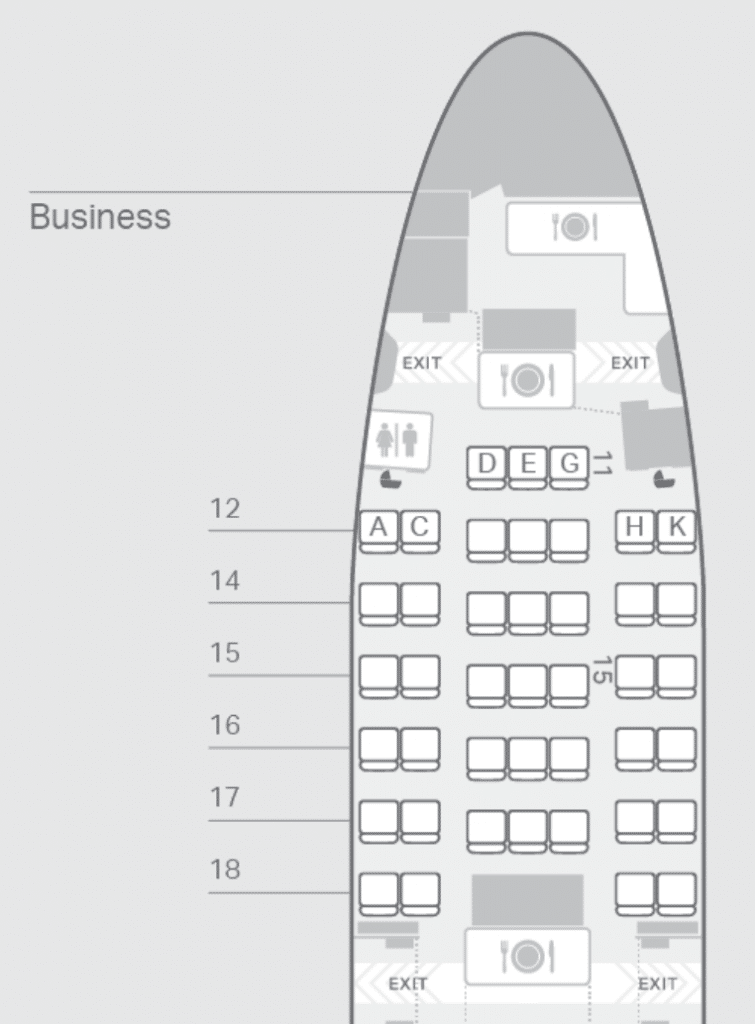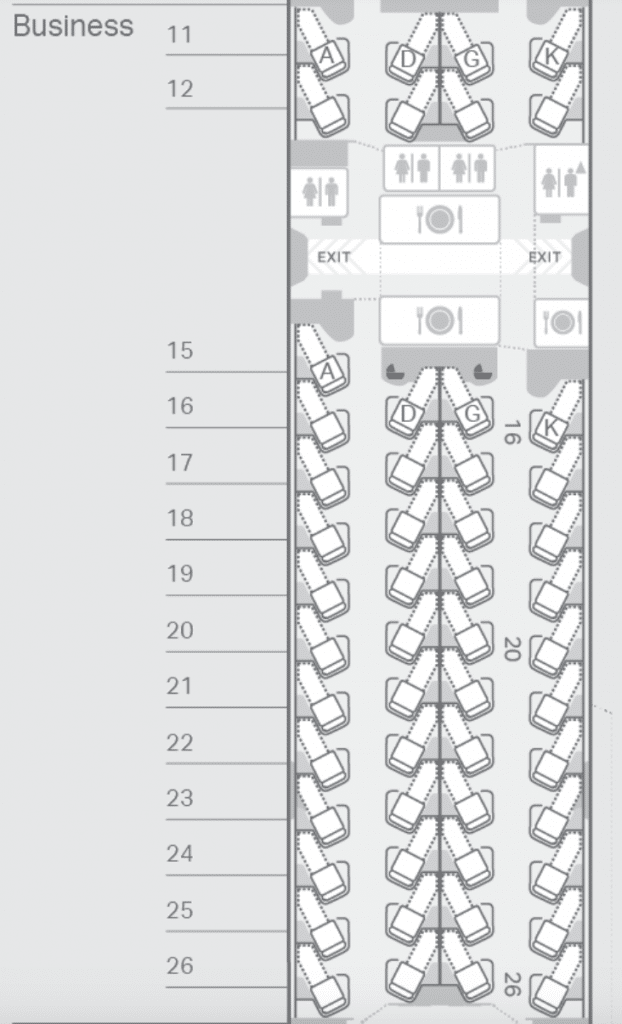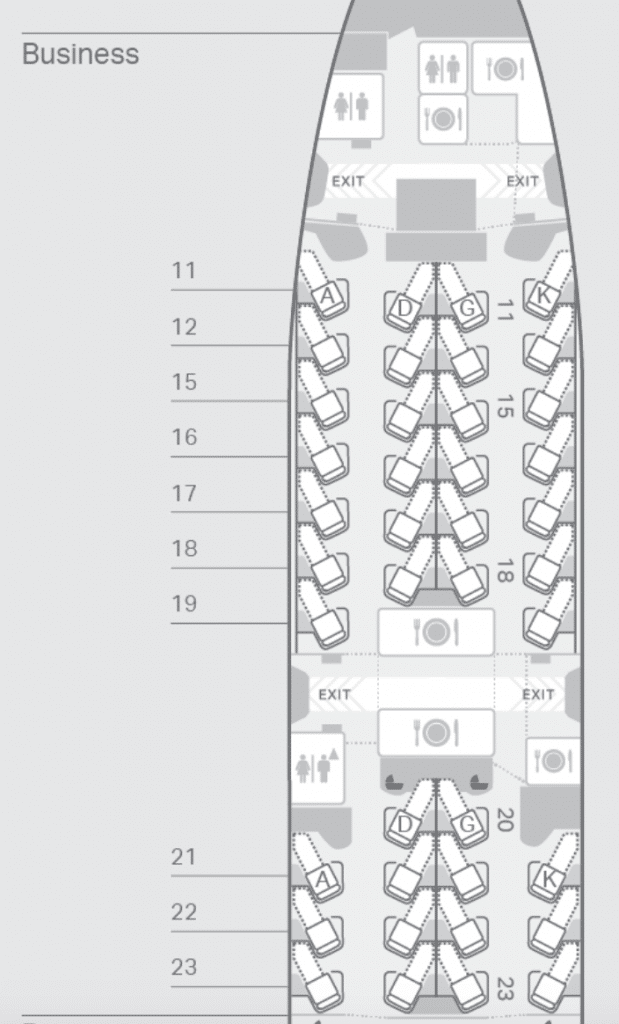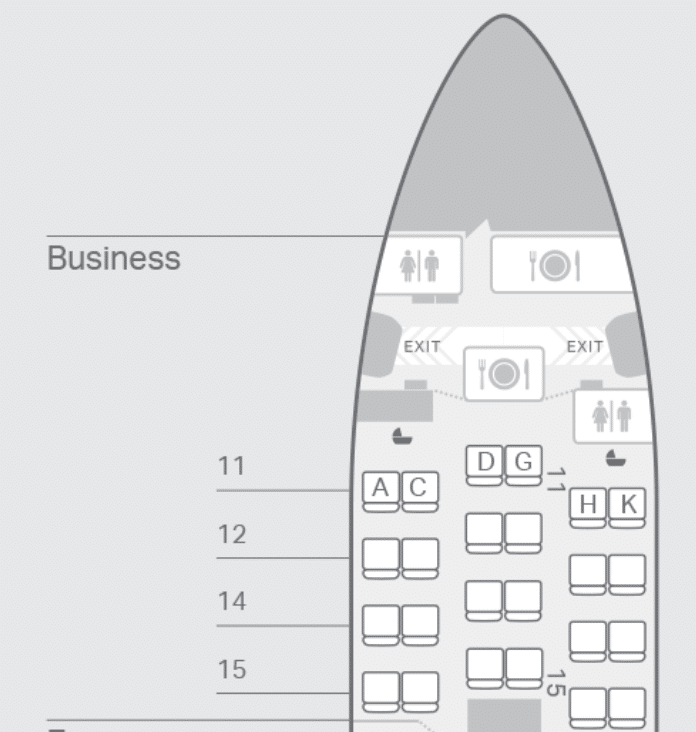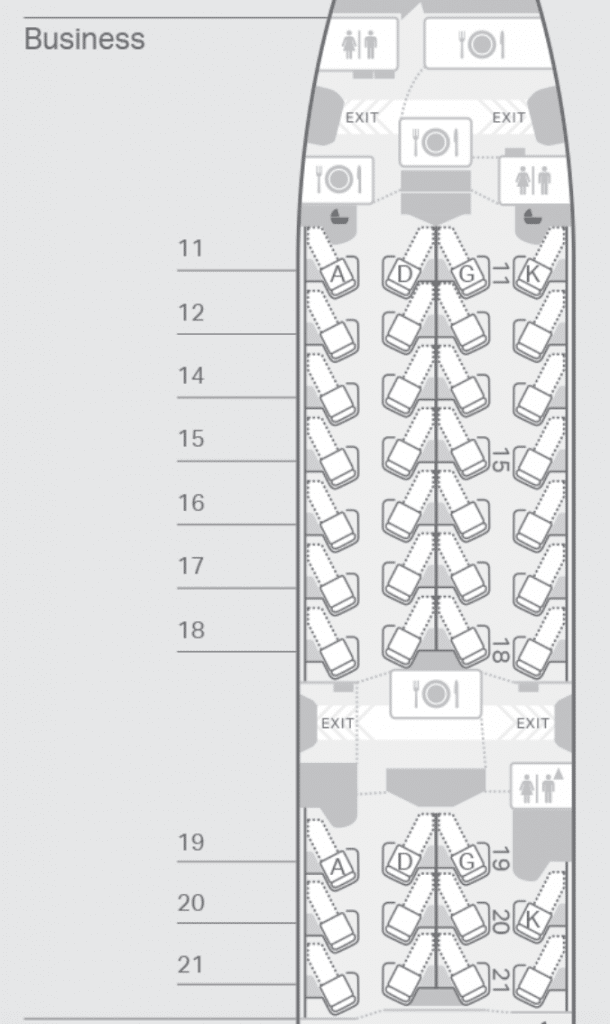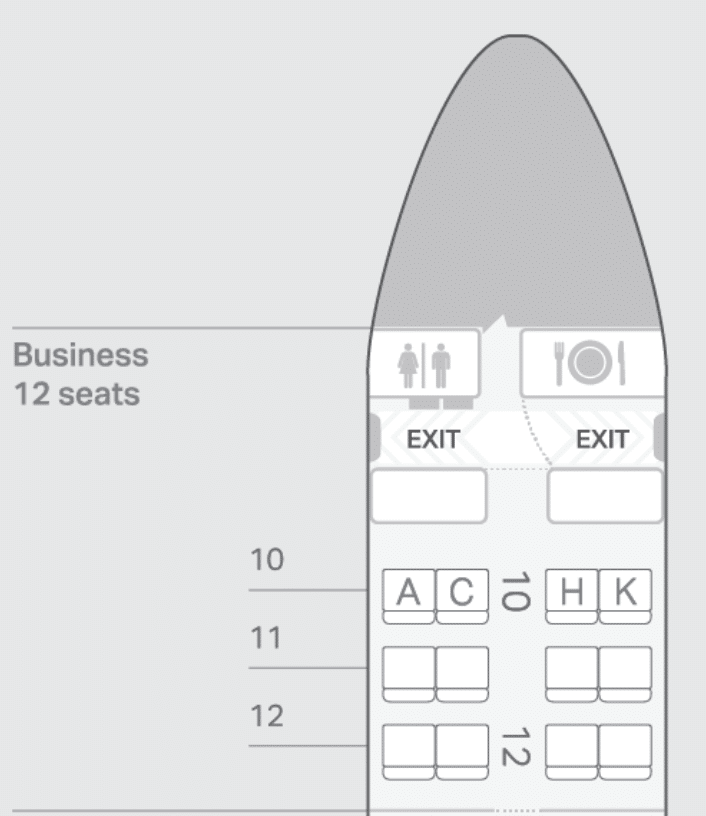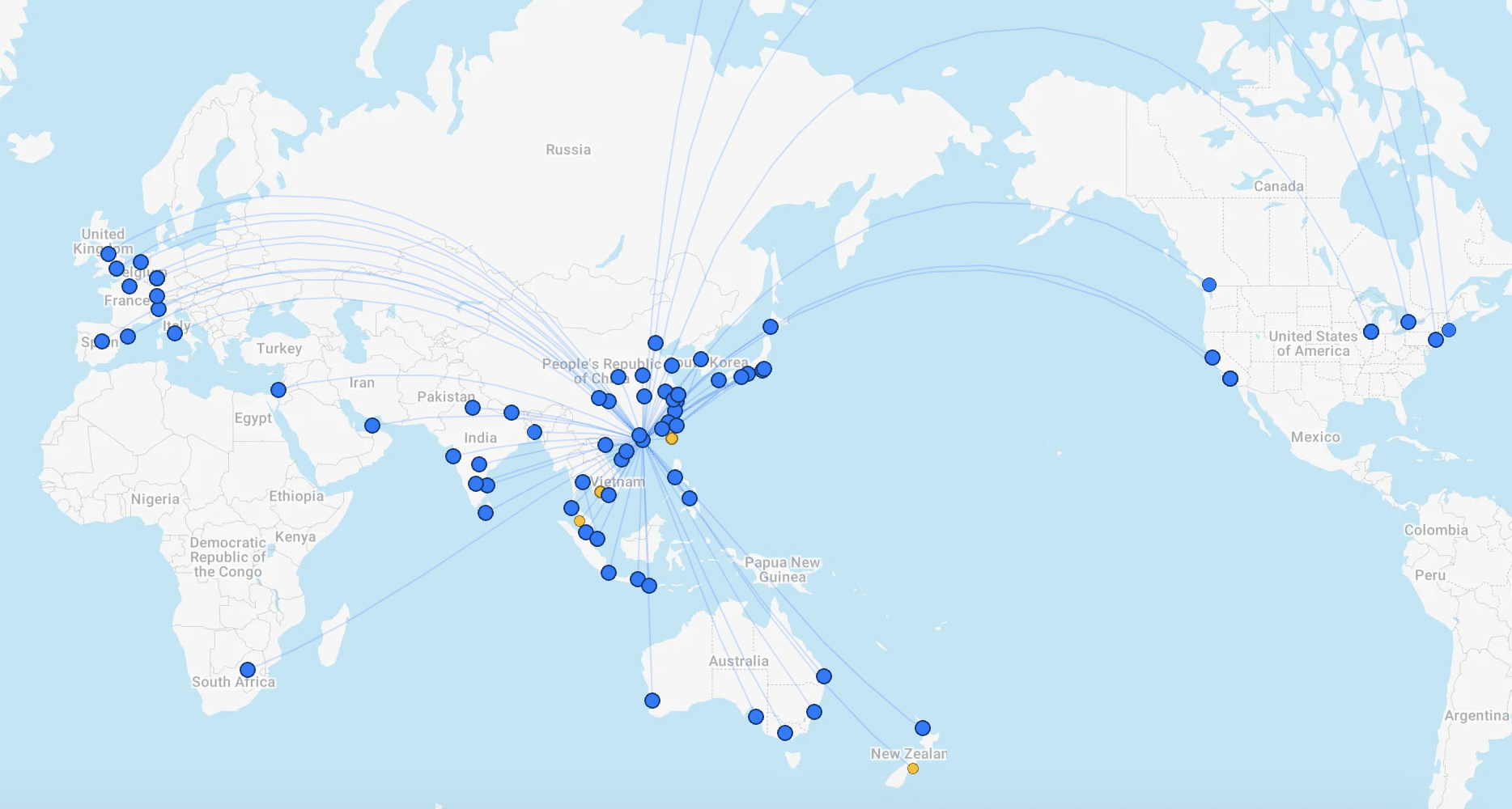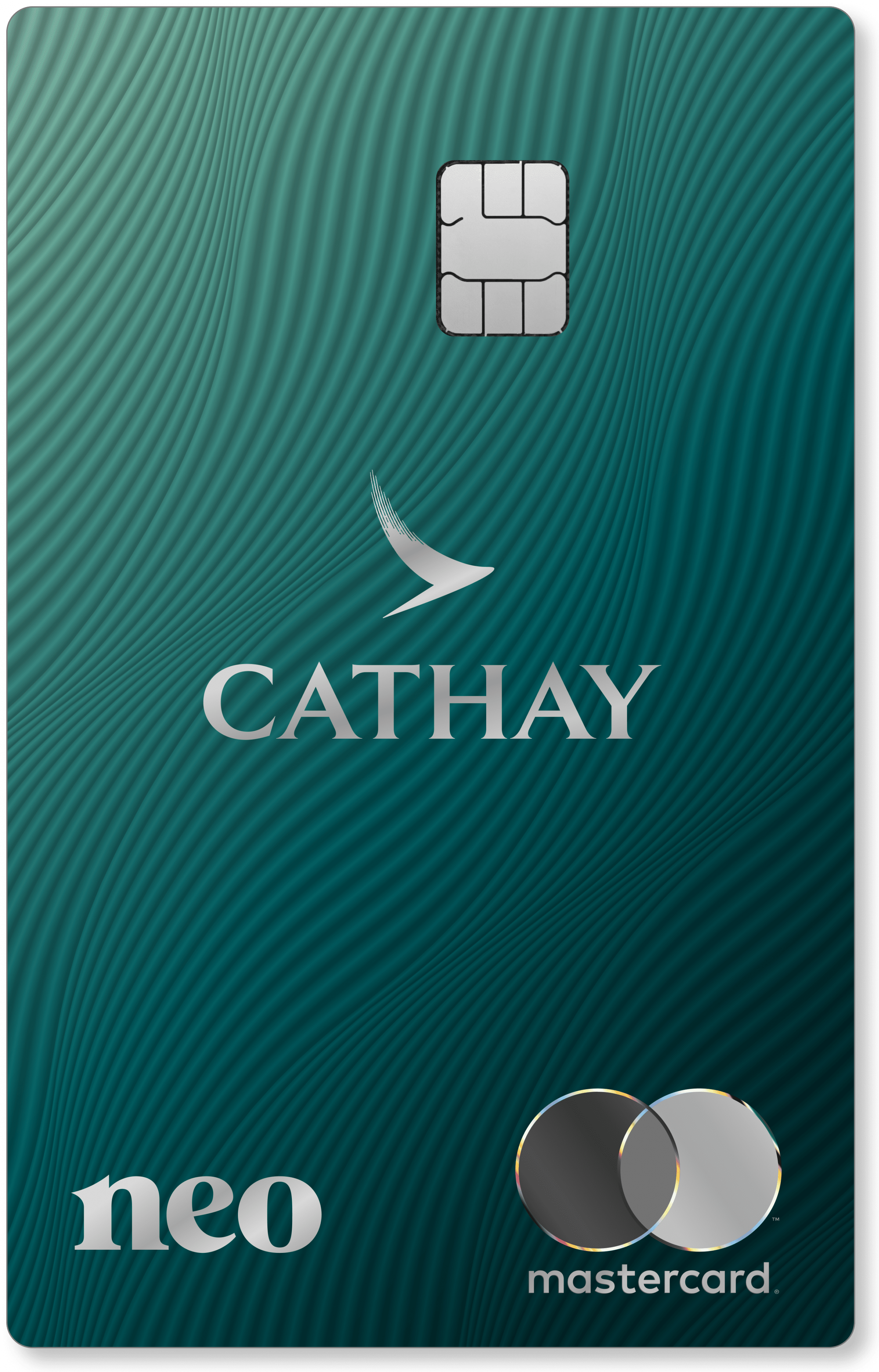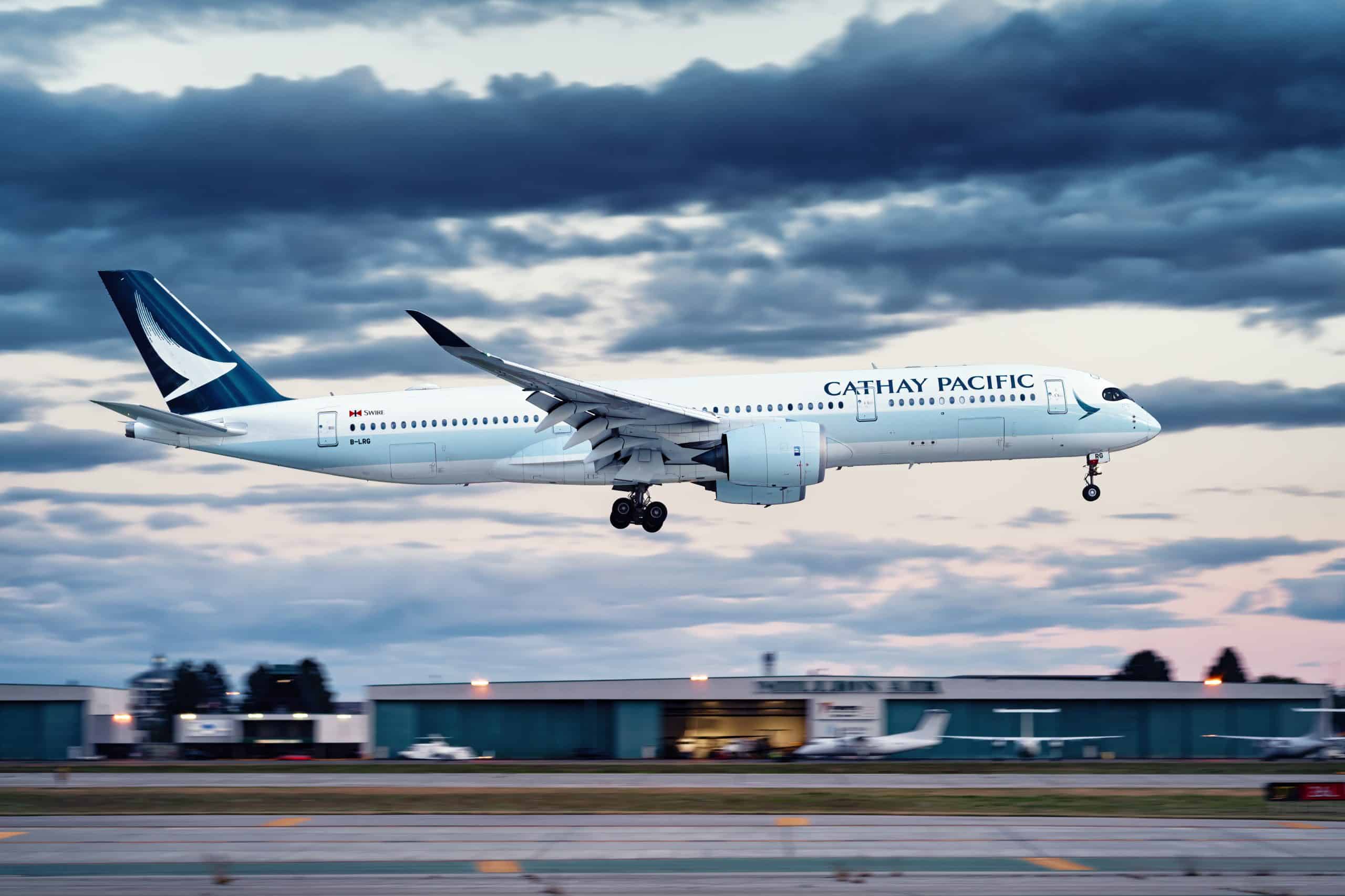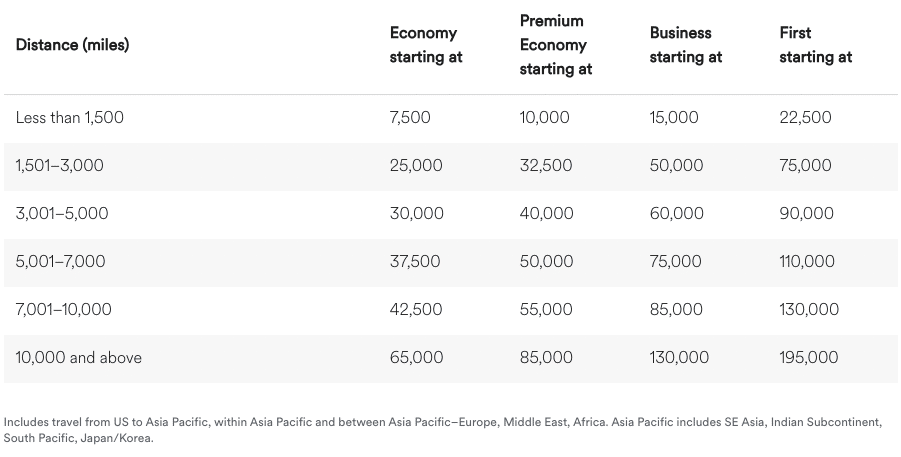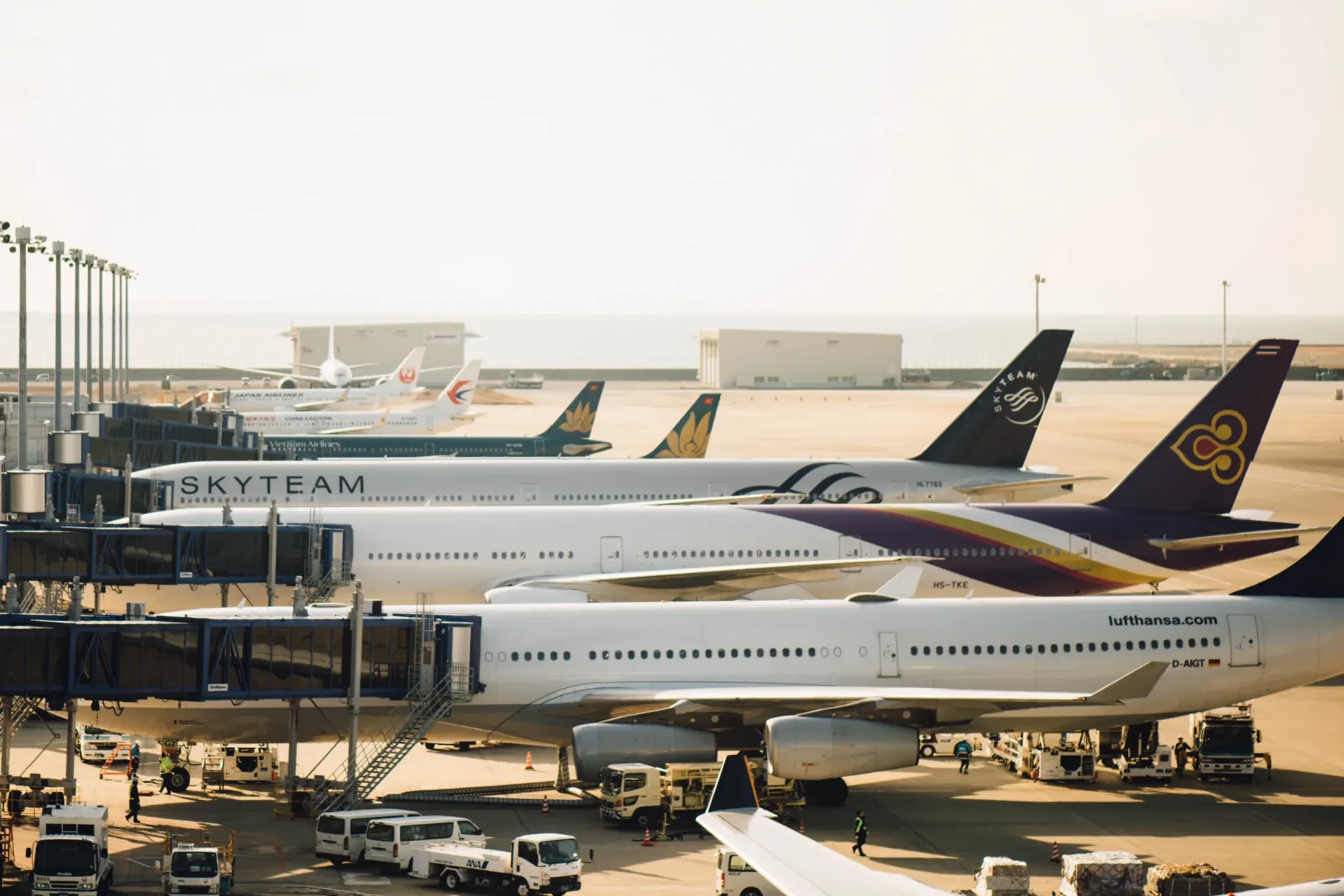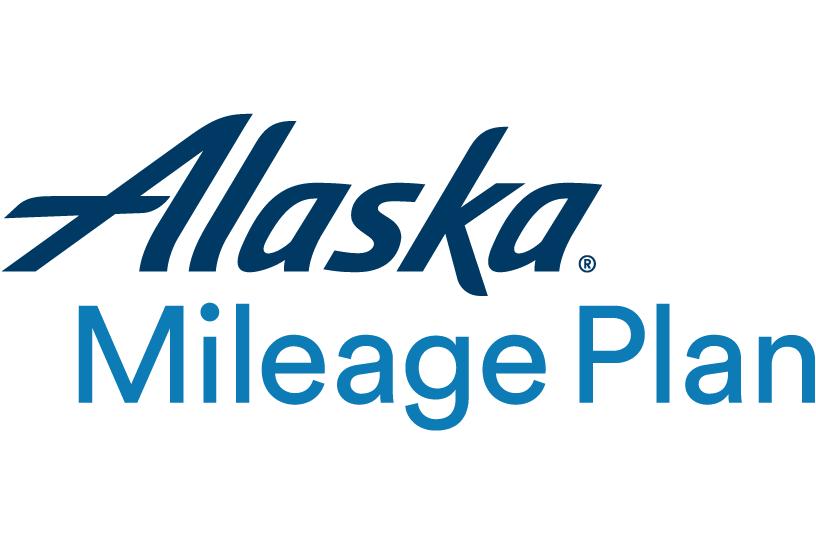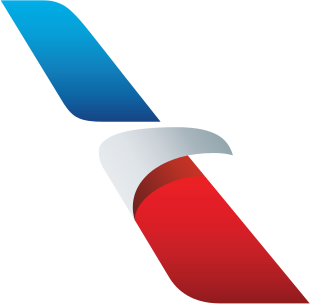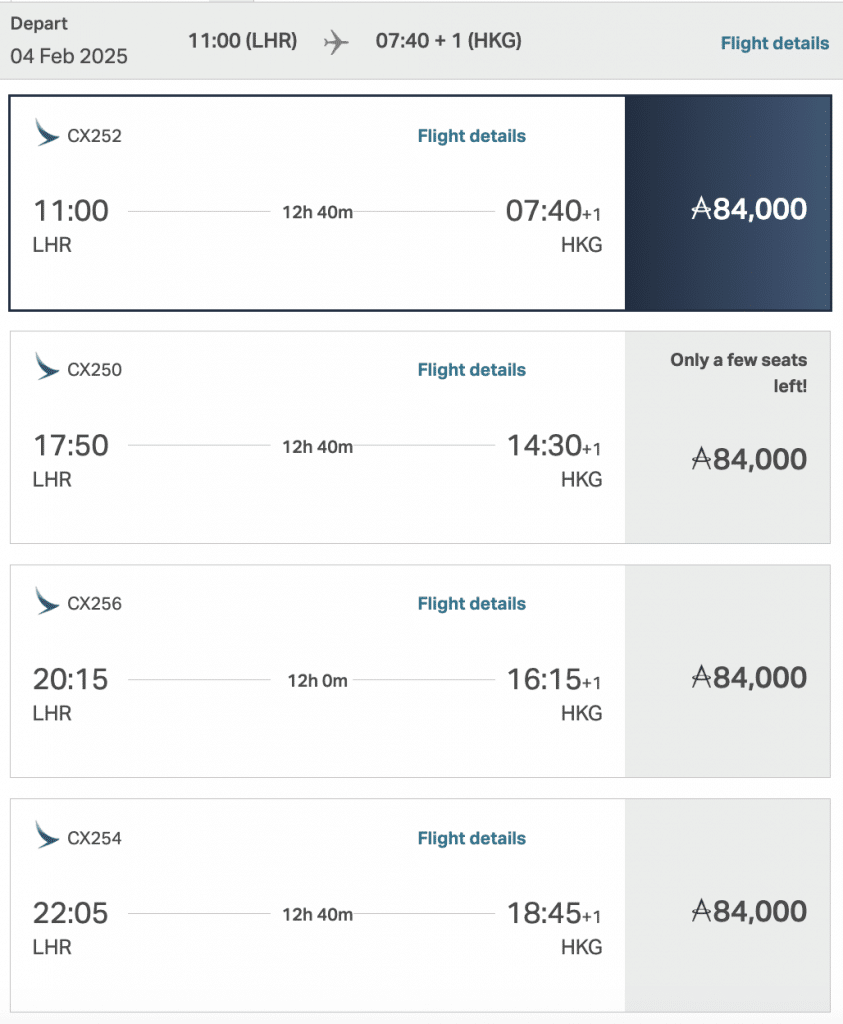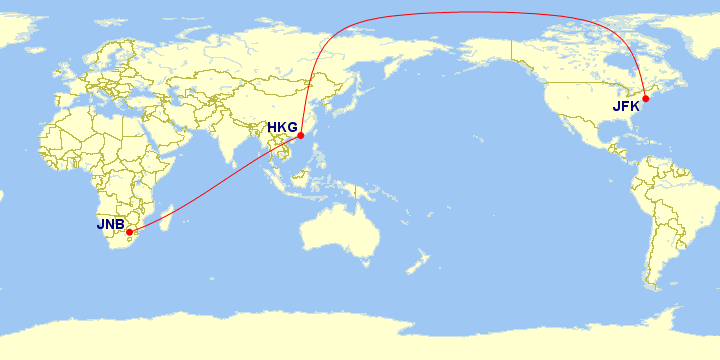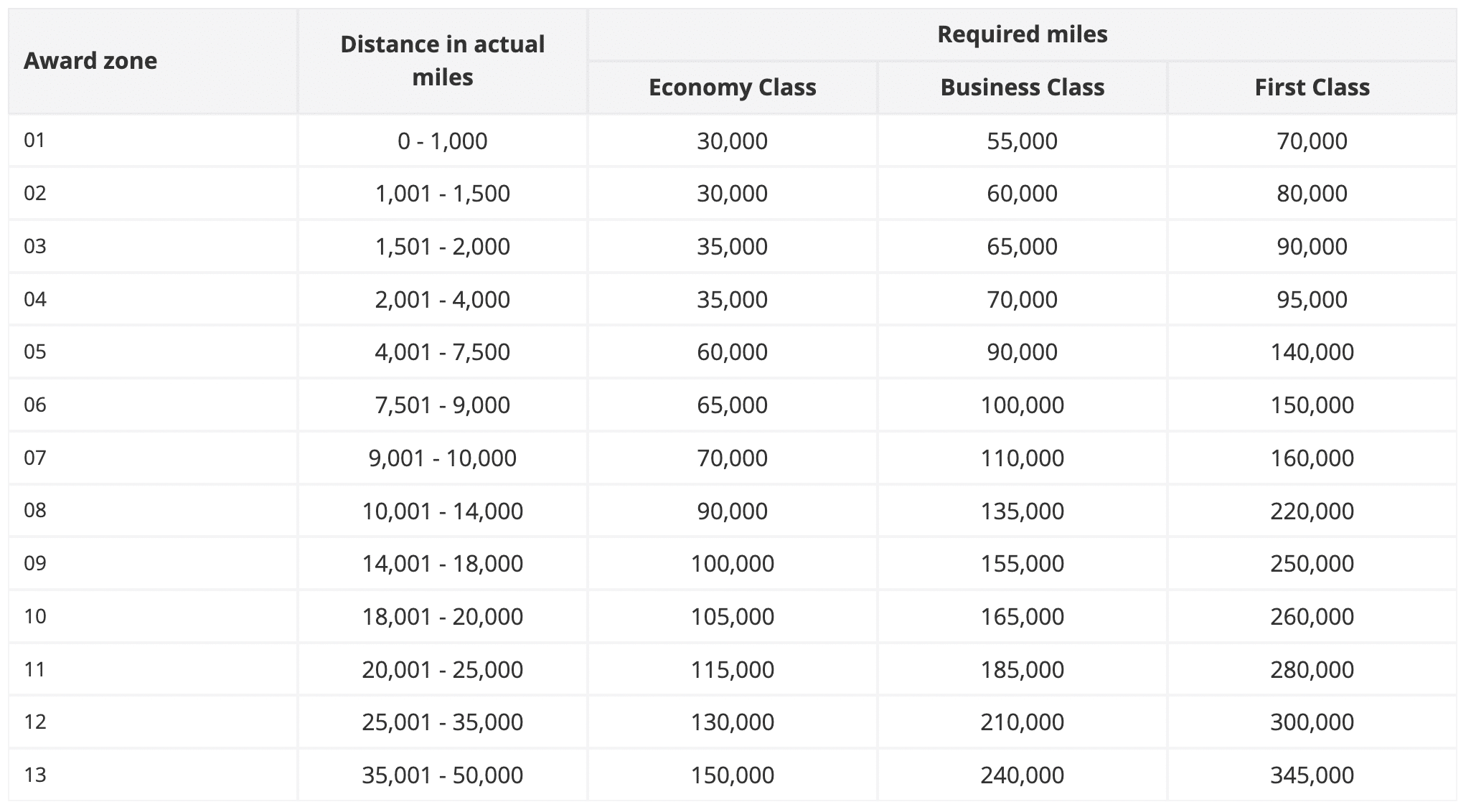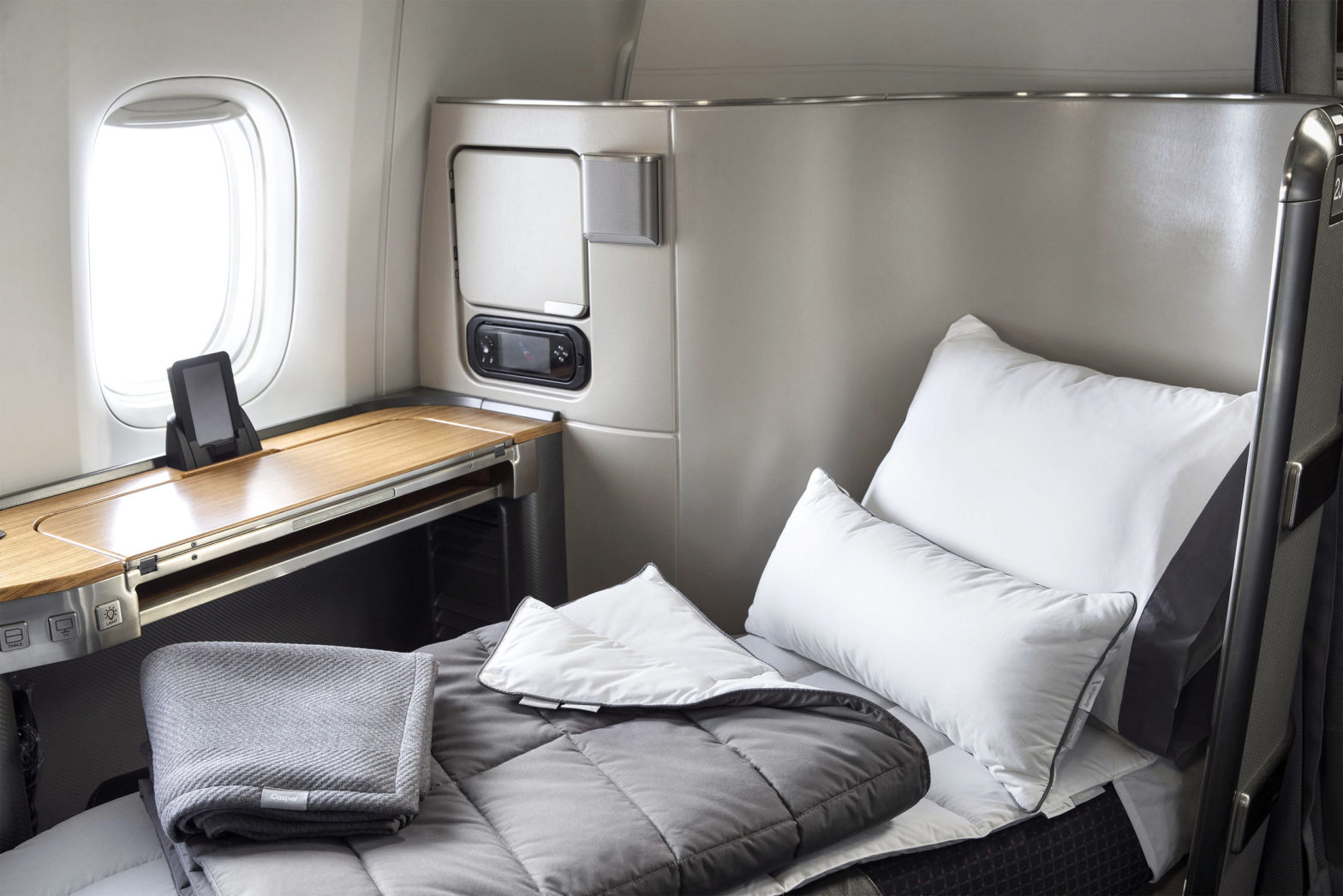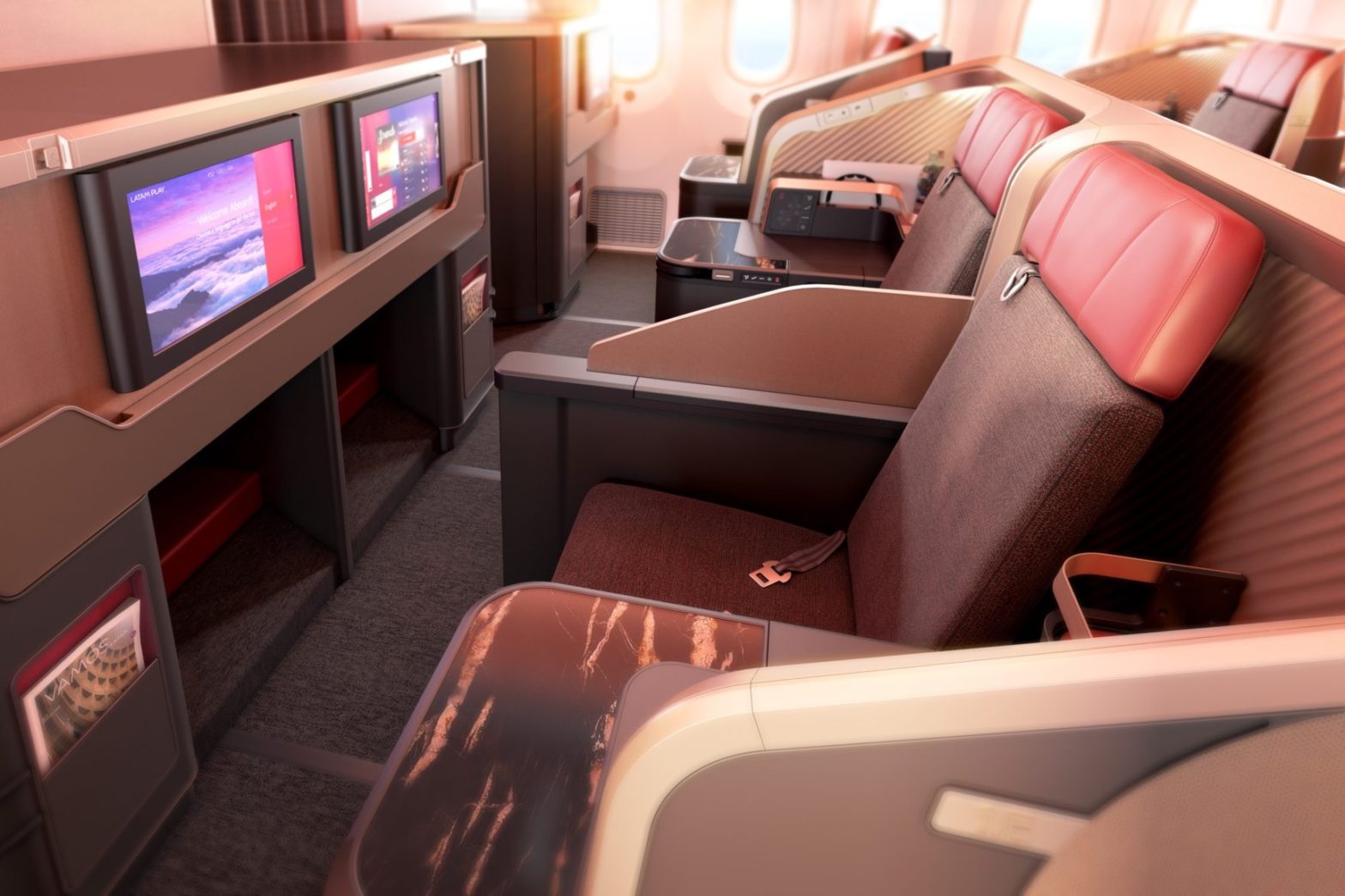Cathay Pacific is often thought of as one of the world’s leading airlines, with a highly coveted First Class experience.
While perhaps a bit of a step down from the airline’s best product, Cathay Pacific business class is still a popular way to travel from the United States and Canada to Asia and beyond.
Cathay Pacific’s hub is in Hong Kong, from where it services a large portion of the world.
In this guide, we’ll explore everything there is to know about the Cathay Pacific business class experience, including what you can expect before and throughout your flight.
We’ll also look at the various business class cabin types and routing options, as well as the best ways to book Cathay Pacific business class flights with points.
The Cathay Pacific Business Class Experience
No matter which Cathay Pacific business class flight you fly on, the ground experience should be similar across the board.
Cathay Pacific has dedicated world-class business class lounges in Hong Kong and around the world for eligible passengers.
However, once onboard the flight, the aircraft and cabin you’re flying on can drastically change the experience for better or for worse.
Some cabins offer seats that can change into lie-flat beds, with updated entertainment systems and larger seat space, while others may be a bit outdated, or might lack the option to fully recline your seat altogether.
That being said, when onboard, you’ll certainly enjoy quality food and service from the Cathay Pacific staff.
Ground Experience
As soon as you arrive at the airport, you’ll have dedicated check-in lanes to make the process quick and smooth.
In fact, if you’re flying out of Hong Kong, business class passengers have a separate check-in area located at Aisle B on Level 7 in Terminal 1.
Once checked-in, you’ll have access to a variety of business class lounges, either from Cathay Pacific or other Oneworld airlines.
In Hong Kong, you can choose from The Wing, The Pier, or The Deck. The Wing and The Pier have separate sections for business class and First Class passengers, while The Deck may be used by passengers from both cabins.
If you arrive early, or you have a long layover in Hong Kong, you can certainly enjoy all three lounges; however, if you’re short on time, you’ll have a tough choice to make.
The Wing, which is located on Level 6 of Terminal 1 near Gate 2 has a brighter feel, with plenty of natural light coming in through large windows, which offer sweeping views of the tarmac.
At the Wing, you can take a seat at the iconic Long Bar and sip on some champagne as you watch the planes come and go.
The Pier is Cathay Pacific’s largest lounge, and it focuses on seminal Hong Kong experiences. It’s located on Level 6 in Terminal 1, near Gate 65.
In this lounge, you can enjoy various regional Chinese foods and spend time in the unique in-lounge teahouse.
Lastly, The Deck is Cathay Pacific’s newest lounge, which opened in early 2023. It’s located on Level 7 in Terminal 1, near Gate 6.
Marketed as more of a living room than a lounge, it features designer furniture set up in an inviting configuration to create a warm atmosphere, and within the space, guests are surrounded by curated art and music.
The Deck also has an indoor terrace section where you can sit and watch the rest of the airport below.
What Cathay Pacific lounges may be best known for, however, are the noodle bars, which can be found in each of the three lounges.
While each lounge provides something unique, you’ll probably be best off enjoying the one that’s closest to your departure gate.
Each of these lounges opens at 5:30am. The Pier remains open until the last departure of the day, while the other two close at 12:30am.
If you’re not departing from Hong Kong, you’ll still have access to other business class lounges. For instance, Cathay Pacific has dedicated lounges in other major cities, such as San Francisco and Vancouver.
Cathay Pacific is also a member of the Oneworld airline alliance and has partnerships with other airlines and lounges. As a business class passenger, you can expect to enjoy lounge access in most airports across Cathay Pacific’s network.
Seat
The Cathay Pacific business class seats differ depending on the aircraft you’re on.
Lie-flat business class seats can be found on Cathay Pacific’s Airbus A350 and Boeing 777 aircraft, as well as on most Airbus A330s.
The Airbus A350 business class seat is a slightly updated Cathay Pacific business class product. The seats on the Airbus A350s were designed by Studio F.A. Porsche and provide more room when the seat is positioned in a flat bed.
What’s more, the A350 business class seats have a slightly larger 18.5” entertainment screen, with an accompanying 4.3” video handset.
By comparison, the business class seat on the Boeing 777 has a 15” entertainment screen, and an overall outdated feel compared to the newer version on the A350s.
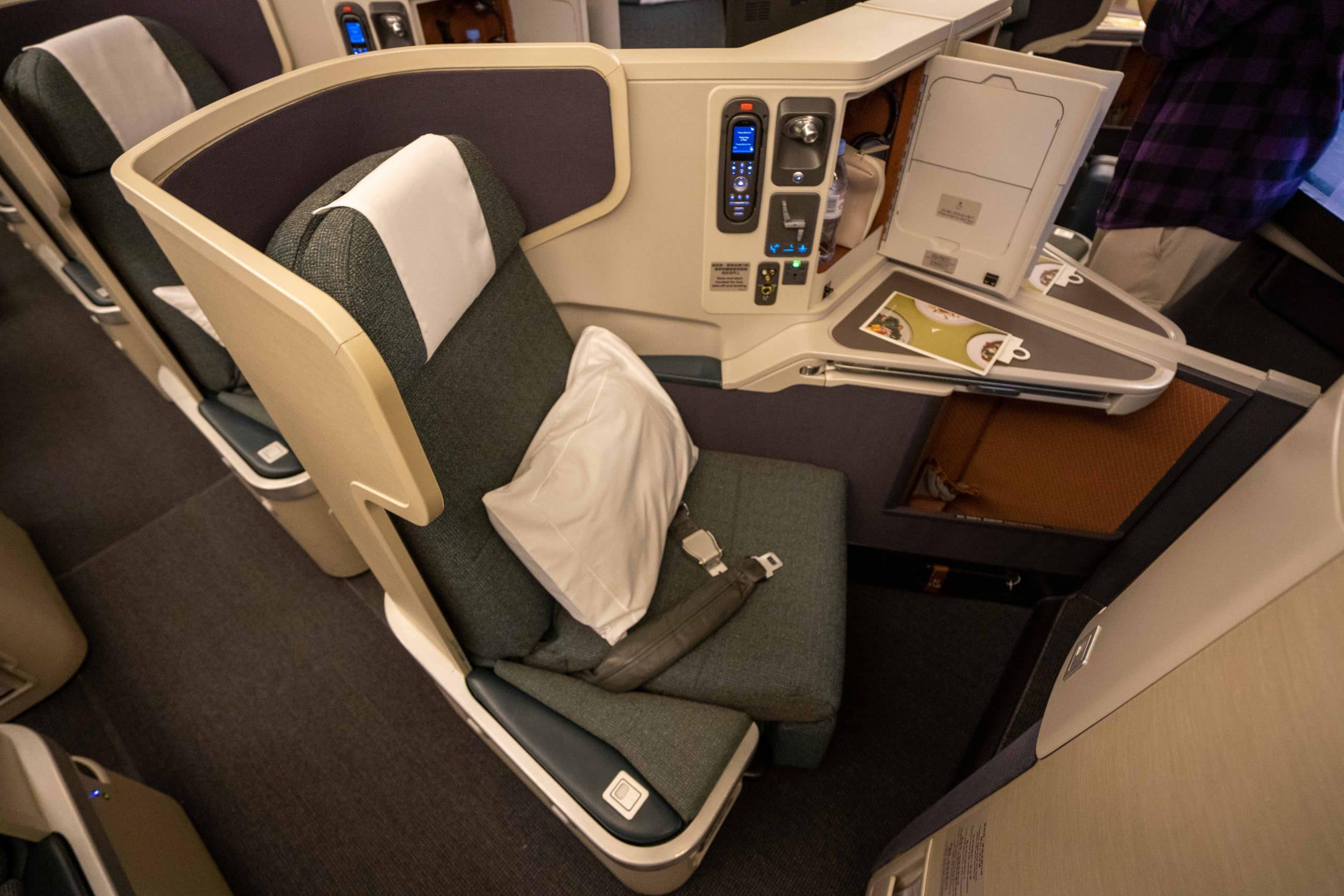
The Airbus A350s also come with slightly more storage space, with room under the ottoman to store your belongings.
Cathay Pacific was one of the first airlines to use the Zodiac Aerospace-manufactured Cirrus seats, which helps provide a decent amount of privacy, despite there being no sliding door or partition.
If you’re flying Cathay Pacific business class, you’ll receive a luxury amenity kit from Bamford, which comes with lotions, face mist, and lip balm, among other essentials.
When you wish to transform your seat into a bed, you’ll receive 400-thread-count cotton bedlinen, and plush pillows to enhance your comfort.
Food and Drink
Well before you board your Cathay Pacific business class flight, you can pre-select your preferred meals.
Cathay Pacific allows you to choose a meal starting from ten days, and up to 24 hours, prior to your flight’s departure.
Simply log in to your booking on Cathay Pacific’s website. Here you can view the inflight menu and pre-select your meal.
Cathay Pacific offers a variety of special meals, including meat-free options, religious meals, and designated meals if you have a medical-dietary preference.
If you wait until you’re on board to order your meal, you’ll still have a great selection of Asian-inspired dishes.
You’ll also have your choice of drinks, including teas from JING, wine, and free-flowing Champagne.
Cathay Pacific Business Class Cabins
Cathay Pacific flies four different types of aircraft, and each has a business class cabin.
Notably, not all of Cathay Pacific’s aircraft have a lie-flat seat option, so if you’re hoping to enjoy at least part of your flight fully horizontal, the easiest way to tell if this option will be available is by looking at how the seats are configured.
If the seats are in a reverse-herringbone configuration, they’ll be lie-flat seats. If all the business class seats are completely forward facing, they won’t be able to recline all of the way.
Airbus A350
The Airbus A350 has two versions: the Airbus A350-900 and the Airbus A350-1000.
The Airbus A350-900 has 38 business class seats in a 1-2-1 configuration from rows 11–21.
Comparatively, the Airbus A350-1000 has 46 business class seats in the same configuration, but spread out from rows 11–23.
On the Airbus A350-900, rows 20 and 21 are separated from the rest of the business class cabin by a galley, toilet, and emergency exit rows. These two rows are also a lot closer to the premium economy seats, and therefore may come with slightly less privacy.
On all Airbus A350s, seats 11D and 11G are right at the front of the aircraft, and very close to the toilets. These seats should generally be avoided if there are any other seats available.
The best seats to choose if you’re a solo traveller are any of the window seats, as you won’t be seated next to another passenger.
If you’re travelling with a companion, any two middle seats next to each other will likely be the best choice, with the exception of the previously mentioned seats 11D and 11G.
Keep in mind that sitting side-by-side in middle seats won’t allow you to easily communicate with each other due to the reverse herringbone layout.
Boeing 777-300
Cathay Pacific operates three different versions of business class on its Boeing 777-300 aircraft.
Version 77P has a total of 42 business class seats, none of which can turn into lie-flat beds. What’s more, the completely forward-facing seats are configured in a 2-3-2 layout.
This configuration means that you certainly won’t experience as much privacy as compared to other Cathay Pacific business class cabins.
Version 77A is the only Cathay Pacific aircraft which features a First Class cabin. Behind First Class, there’s a small two-row business class section, a toilet and galley section, and then the rest of the business class cabin.
There are a total of 53 business class seats in a 1-2-1 reverse herringbone configuration, making this aircraft Cathay Pacific’s largest business class cabin.
If you’re travelling solo, any window seat will come with the most amount of privacy.
If you’re travelling with a companion, any two middle seats willbest allow you to enjoy the flight together.
Lastly, Version 77K has 40 lie-flat business class seats in the same configuration as 77A, just without the First Class cabin.
Rows 20–23 are in a separate section from rows 11–19, divided by the galley, a toilet, and the exit rows.
Middle seats 20D and 20G should be avoided, as you’ll experience the most traffic since you’re near to a toilet and the galley.
Airbus A330-300
There are five different configurations of the Airbus A330-300.
In versions 33P and 33B, similar to the other aircraft, all forward-facing business class seats are unable to transform into a lie-flat bed.
Comparatively, versions 33K, 33E, and 33J all have the reverse herringbone seats in a 1-2-1 configuration, and these can be converted into lie-flat beds.
As with the other lie-flat business class cabins, the best seats if you’re a solo traveller are the window seats, and if you’re travelling with a companion, the best seats are the two middle ones.
Airbus A321neo
The Airbus A321neo is primarily used on shorter routes within China and to other nearby Asian countries.
There are 12 business class seats in a 2-2 configuration. These seats are unable to recline to a lie-flat position, but still provide more room than the economy seats.
If you’re travelling solo, there isn’t really a seat that provides more privacy than others. Seats A and K in any row are all window seats and may be the best choice.
If you’re travelling with a companion, you’ll want to choose any two seats beside each other. These include seats A and C and seats H and K in the same row.
Cathay Pacific Business Class Routes
Cathay Pacific operates a number of business class routes all over the world.
In North America, there are direct flights to Hong Kong from the following cities:
- Vancouver
- Toronto
- Boston
- Chicago
- Los Angeles
- New York
- San Francisco
As for the rest of the world, Cathay Pacific flies to select cities in Europe, Africa, Oceania, and the Middle East, as well as to over 45 destinations in Asia.
How to Redeem Points for Cathay Pacific Business Class
Cathay Pacific is a member of the Oneworld airline alliance. This means that you can use points from other Oneworld airline alliance loyalty programs, in addition to the airline’s own loyalty program, to book Cathay Pacific business class flights.
Cathay Pacific Asia Miles
Cathay Pacific’s points program, Asia Miles, is a great choice for booking Cathay Pacific business class flights.
In fact, up until recently, this was arguably the best way to book Cathay Pacific business class flights, since members have access to a greater inventory of premium seats using Asia Miles compared to other loyalty programs.
Another reason for the program’s appeal is because Cathay Pacific Asia Miles can easily be earned in both Canada and the US.
One way to earn Asia Miles is by using a co-branded credit card. There is one co-branded Cathay Pacific credit card in Canada, and two available in the US.
In Canada, you can apply for Neo’s Cathay World Elite Mastercard, and in the US, you can apply for Synchrony Bank’s Cathay Pacific Visa card and their Cathay Pacific Visa Signature card.
- Earn 35,000 Asia Miles upon card activation†
- Plus, earn 25,000 Asia Miles upon spending $5,000 in the first three months†
- Then, earn 4 Asia Miles per dollar spent on Cathay Pacific flights†
- And, earn more Asia Miles at Neo's partners†
- Enjoy a 15% discount on Cathay Pacific flights†
- Minimum income: $80,000 (personal), $150,000 (household)
- Annual fee: $180
Furthermore, Cathay Pacific Asia Miles can be easily earned by transferring from a number of bank points programs in both Canada and the US.
In Canada, you can transfer points from the listed programs at the following rates:
- RBC Avion: 1:1
- American Express Membership Rewards: 1:0.75
- HSBC Rewards: 25:8 (25,000 HSBC points = 8,000 Asia Miles)
In the US, you can transfer from the following programs to Asia Miles:
Depending on your origin and destination, redeeming Asia Miles for Cathay Pacific business class flights can be a worthwhile endeavour. However, Cathay Pacific made some changes to its award charts that took effect on October 1, 2023, and unfortunately, the changes represent a devaluation of Asia Miles and have increased the number of points required for premium redemptions across the board.
For example, business class flights from western North America that used to cost 70,000 Asia Miles now cost 84,000 Asia Miles, and flights from the rest of North America have gone up from 85,000 Asia Miles to 110,000 Asia Miles.
Similarly, while it previously cost 65,000 Asia Miles to fly between Hong Kong and Europe, the redemption now clocks in at 84,000 Asia Miles.
Prior to October 1, 2023, flying from Hong Kong to Australia, Israel, or Dubai, would cost 45,000 Asia Miles in business class. The same flight now costs 58,000 Asia Miles.
Lastly, one-way business class flights between Hong Kong and New Zealand or Johannesburg were once available for 65,000 and will now set you back 84,000 Asia Miles.
In reference to this devaluation, Cathay Pacific has tried to justify the increase in pricing by indicating that award seat availability will become better, so while it’s unfortunate to see the required number of points increase so significantly, we can at least hope for improved opportunities to snag some premium seats.
Alaska Airlines Mileage Plan
Alaska Airlines Mileage Plan is a loyalty program that has also seen some recent changes, with three updated awards charts beginning March 2024.
Rather than requiring a set amount of Alaska miles for a specific routing, Alaska Airlines Mileage Plan uses a “starting at” price point. This means that while you may be able to find prices for as low as the listed amount, it could also cost more.
For example, here’s the chart for travel to the Asia-Pacific region:
Alaska miles are easier to accumulate in the US, as you can earn miles when you spend on one of two Bank of America credit cards: the Alaska Airlines Visa Signature Card and the Alaska Airlines Visa Business Card.
If holding one of these credit cards isn’t an option, you can also increase your Alaska miles balance by transferring Marriott Bonvoy points to the program, buying points during a sale, or earning miles by flying with Alaska and their travel partners.
Once you’ve accumulated some Alaska miles, you can then redeem them for awards flights with Cathay Pacific. For example, using the program to book a one-way Cathay Pacific business class flight between cities in Canada or the US and Hong Kong starts at 75,000 Alaska miles.
A notable feature of the Alaska Airlines Mileage Plan is that the program allows a free stopover on award flights. Therefore, as long as you’re flying with the same airline for the entire journey, or a total of two airlines as long as one is Alaska Airlines, you can squeeze in two stops on a single booking.
Unfortunately, Cathay Pacific business class award space is sparse with partner programs, so you’ll need to get lucky to find space on most long-haul routes.
American Airlines AAdvantage
American Airlines AAdvantage is also a great way to book Cathay Pacific business class.
In Canada, you can transfer RBC Avion points to AAdvantage miles at a ratio of 1:0.7, and in the US, you can earn AAdvantage miles through co-branded credit cards.
On both sides of the border, it’s possible to transfer Marriott Bonvoy points to AAdvantage miles, and you can also buy miles from the program directly during a sale.
American Airlines AAdvantage has a published award chart for bookings with partner airlines.
A one-way business class flight beginning or ending in Hong Kong and coming from or going to cities in the listed regions will cost the following amount of AAdvantage miles:
- Canada and the contiguous US: 70,000 AAdvantage miles
- Europe: 75,000 AAdvantage miles
- Australia: 40,000 AAdvantage miles
- Africa: 70,000 AAdvantage miles
Cathay Pacific Business Class Award Availability
Cathay Pacific’s business class award availability is notoriously hard to find, especially if you’d like to book the flight with loyalty programs from partner airlines.
You can generally find more business class award seats available to book using Asia Miles; however, they’re still fairly hard to find, especially for long-haul flights to/from North America.
As mentioned above, the airline has stated that it will increase premium award seat availability alongside the changes to the award charts in October 2023.
If that turns out to be the case, then Asia Miles will likely remain the best chance to secure a Cathay Pacific business class seat using points.
Just be sure to factor in any transfer ratios when you’re comparing prices between programs.
Tips & Tricks for Cathay Pacific Business Class
Even though booking a Cathay Pacific business class flight may be difficult, there are a few tips and tricks that can help you secure a spot and maximize your experience.
Tack on Another Flight
Depending on which loyalty program you use to book Cathay Pacific business class, it may be beneficial to add on an additional flight to your itinerary.
This tip can be useful if you’re using Asia Miles to book a flight that’s longer than 7,500 miles, which includes flights from the eastern US to Hong Kong.
If your flight is longer than 7,500 miles, instead of ending your trip in Hong Kong, you can add on another business class flight from Hong Kong to another destination for no additional Asia Miles.
The reason that this works is because the Asia Miles award chart maxes out at 7,500 miles, which means that you’d pay the listed amount whether you fly 7,501 miles or 12,000 miles.
A flight from Toronto to Hong Kong measures around 7,810 miles, which means that it’ll cost 110,000 miles.
However, if you’re able to find award availability for a flight onward from Hong Kong to, say, Johannesburg, the flight would still fall within the same distance band, and you’d still only wind up paying 110,000 miles, even though the total distance flown will be around 14,440 miles.
As long as you don’t mind taking the long way around, and of course if you’re able to find award availability, this feature let’s you maximize your Cathay Pacific business class experience.
Multi-Carrier Award Flights
If you’re planning a trip that’s more complex than a simple one-way or round-trip booking, you may be able to take advantage of the Cathay Pacific Oneworld Multi-Carrier Award Chart or the British Airways Oneworld Multi-Carrier Award Chart.
These charts allow you to book more complex routings with multiple airlines and can be a great deal in some situations.
The trickiest part is surely going to be finding award space and stitching an itinerary together. However, if you’re able to make use of either of these charts, then there’s certainly a lot of value to be found.
Conclusion
Cathay Pacific business class is a great way to travel, especially if you’re able to fly on the updated product found on the airline’s Airbus A350 aircraft.
In the current context, Cathay Pacific business class award space is generally hard to come by, which remains the biggest hurdle to unlocking access to this product
However, if you’re patient and have a flexible schedule (as well as a bit of luck), redeeming miles for a Cathay Pacific business class flight can provide amazing value. By being strategic in your approach, you may find yourself flying to or from Hong Kong in style.


